Why Quality Sleep is Key for Children's Health and Ways to Get More
March 15 marks World Sleep Day — a great time to emphasize the significance of children’s sleep wellness, as research shows high-quality sleep is crucial for…

Update your location to show providers, locations, and services closest to you.
Physical activity -- which includes an active lifestyle and routine exercise -- plus eating well, is the best way to stay healthy.
Fitness recommendations; Exercise - physical activity
An effective exercise program needs to be fun and keep you motivated. It helps to have a goal.
Your goal might be to:
Your exercise program can also be a good way for you to socialize. Taking exercise classes or exercising with a friend are both good ways to be social.
You may have a hard time starting an exercise routine, but once you do start, you may begin to notice other benefits, such as:
GETTING STARTED
You do not need to join a gym to exercise. If you have not exercised or been active in a long time, start slowly to prevent injuries. Taking a brisk 10-minute walk twice a week is a good start.
Try joining a dance, yoga, or karate class if it appeals to you. You could also join a baseball or bowling team, or even a mall-walking group. The social aspects of these groups can be rewarding and motivating.
The most important thing is to do exercises that you can maintain and enjoy.
IMPORTANT NOTE: Talk with your health care provider before starting an exercise program if:
BUILD PHYSICAL ACTIVITY INTO YOUR REGULAR ROUTINE
Simple lifestyle changes can make a big difference over time.
REDUCE YOUR SCREEN TIME
Sedentary behaviors are things you do while you are sitting still. Decreasing your sedentary behaviors can help you lose weight. For most people, the best way to decrease sedentary behaviors is to reduce the time they spend watching TV and using a computer and other electronic devices. All of these activities are called "screen time."
Some ways to decrease screen time are:
If you like playing video games, try games that require you to move your whole body, not just your thumbs.
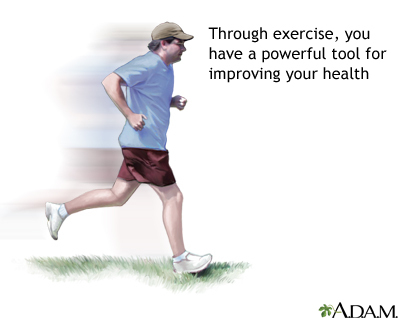
HOW MUCH EXERCISE DO YOU NEED?
The Physical Activity Guidelines for Americans recommends that adults get a total of 150 to 300 minutes per week of moderate-intensity activity, or 75 to 150 minutes per week of vigorous activity. You could also meet this recommendation with an equivalent amount of combined moderate and intense activity. Muscle strengthening, also called strength training, resistance training, or endurance exercise, should also be done 2 or more days a week.
As you become more fit, you can challenge yourself by increasing the intensity of your exercise by going from light to moderate activity. You can also increase the amount of time you exercise.
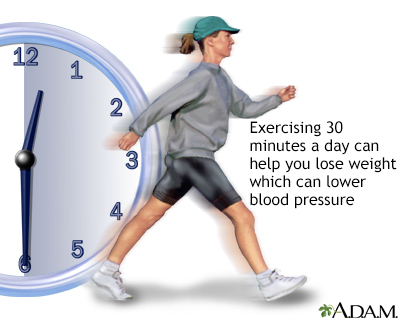
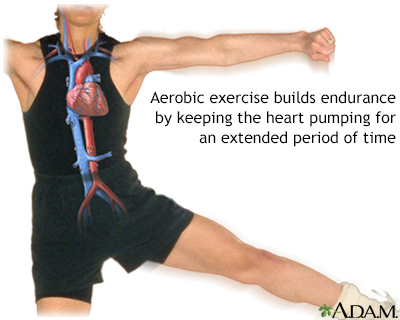
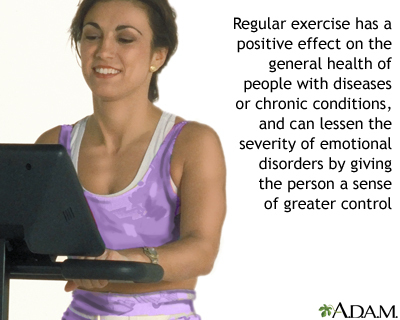
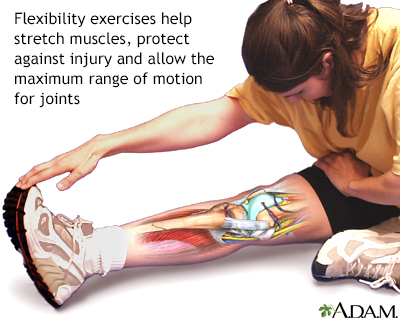
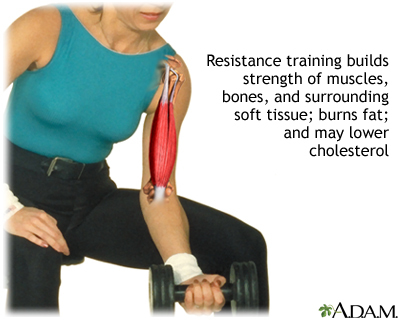
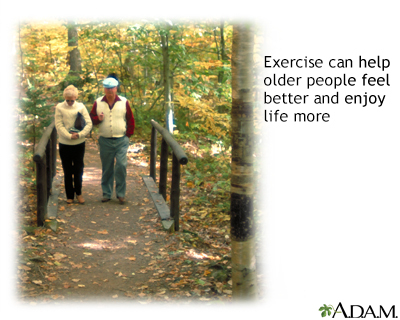
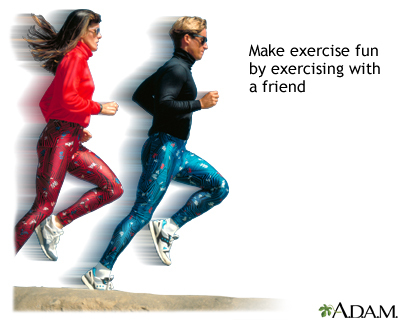

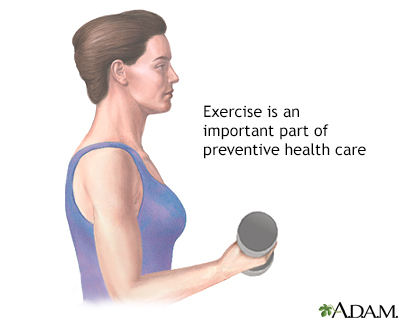
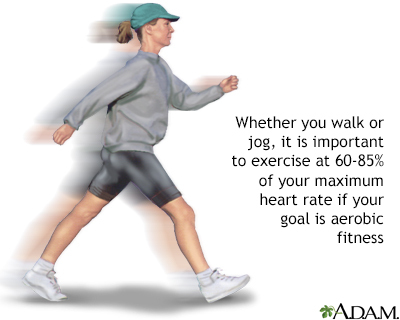
Buchner DM, Kraus WE. Physical activity. In: Goldman L, Schafer AI, eds. Goldman-Cecil Medicine. 26th ed. Philadelphia, PA: Elsevier; 2020:chap 13.
Piercy KL, Troiano RP, Ballard RM, et al. The Physical activity guidelines for Americans. JAMA. 2018;320(19):2020-2028. PMID: 30418471 pubmed.ncbi.nlm.nih.gov/30418471/.
Ridker PM, Libby P, Buring JE. Risk markers and the primary prevention of cardiovascular disease. In: Zipes DP, Libby P, Bonow RO, Mann, DL, Tomaselli GF, Braunwald E, eds. Braunwald's Heart Disease: A Textbook of Cardiovascular Medicine. 11th ed. Philadelphia, PA: Elsevier; 2019:chap 45.

March 15 marks World Sleep Day — a great time to emphasize the significance of children’s sleep wellness, as research shows high-quality sleep is crucial for…

January 16, 2024
A new study led by a University of Florida College of Public Health and Health Professions researcher finds that people with chronic inflammation living in…
Department of Community Health and Family Medicine, +4 more
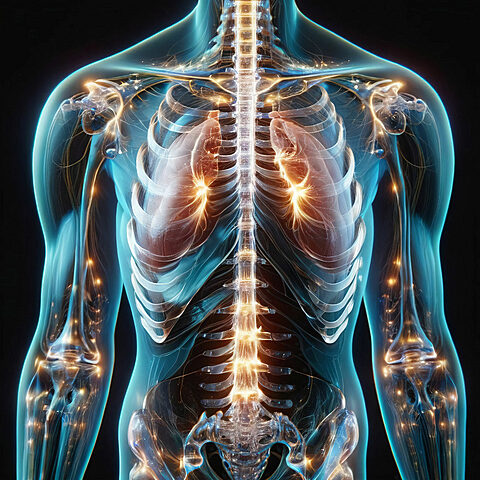
If your son or daughter is struggling in school despite lots of studying, he or she may need to shut those books and get outside for some energetic playtime. New research from scientists in Finland...